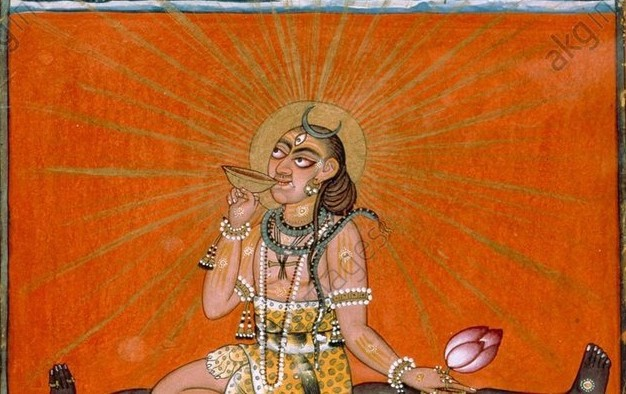The Ancient Holy Medicine which has been known to have been used in religious ceremonies and referred to as Soma in Ancient India, and as Haoma in Zoroastrian traditions, was considered as a Deity in both cultures. The word Soma comes from Sanskrit origin Su – meaning a juice which has been pressed out. Similarly, the term Haoma originates as a derivation from the Avestan language and means the same, extracted juice from a plant (or plants) which were used in Indi-Iranian religious rituals specifically and not to any plant in particular.
The known references from texts date back to 1700 – 1500 BCE. Researchers have been looking for the trace of the Holy and Divine drink. It was mentioned in the Rg Veda as the Soma drink, which was called the Drink of the Gods or the Nectar of Immortality. The quote from the Rg Veda reads as follows:
ápāma sómam amŕ̥tā abhūma
áganma jyótir ávidāma devā́n
kíṃ nūnám asmā́n kr̥ṇavad árātiḥ
kím u dhūrtír amr̥ta mártiyasya
which Stephanie W. Jamison and Joel P. Brereton translates as follows:
We have drunk the Soma;
We have become Immortal;
We have gone to the Light;
We have found the Gods.
~What can hostility do to us now, and what the malice of a mortal, o Immortal One?
Clark M., 2017 postulates that the Holy Drink Soma/Haoma may have been brewed from a concoction of plants which were used to induce entheogenic/ psychedelic experience in the Indian Subcontinent; In recent decades numerous plants have been discovered which each contain either DMT or and MAOI. This means that certain type of or analogue similar to the Holy Medicine resulting from the combination of Holy Banisteriopsis Caapi Vine and Psychotria Viridis can be achieved from combination of other plants, which all may provide almost similar effects. This hints that local variant in Asian subcontinent could have been used, which was referred to as the Holy and Divine Drink Soma. Therefore, Soma/ Haoma may not have been prepared from any single Holy Plant but was a result of different combinations of psychoactive plants, and that in Ancient India – which gave birth to sciences like Ayurveda and Siddha – the experts had enough botanical knowledge to be able to create a concoction from variety of plants which would produce a psychedelic experience.
In the Food of the Gods, ethnobotanist Terrence McKenna postulated that the Holy and Divine drink Soma / Haoma may have been mushroom Psilocybe Cubensis, which is a hallucinogenic mushroom that grows in cow dung. McKenna also refers that the 9th Mandala of Rg Veda makes references to the cow as the embodiment of Soma.
The ingredients used in the Ancient Holy Medicine could have easily varied depending on availability of Holy Plants in the region, as well as adding Psychoactive admixture Plants with the ‘main’ ingredient, either as boosters and/or moderators and/or enhancers, as is done in the Amazons. The Ancient Holy Medicine provided an access to the Holy and Divine Mother Ayahuasca.
References:
- Clark M. (2017), The Tawny One: Soma, Haoma and Ayahuasca, London: Muswell Hill Press.
- Clark M. (2019), Soma and Haoma: Ayahuasca analogues from the Late Bronze Age, Online Publication. Available at: http://akjournals.com/view/journals/2054/3/2/article-p104.xml
- McKenna, T. (1999), Food of the Gods, Rider.


